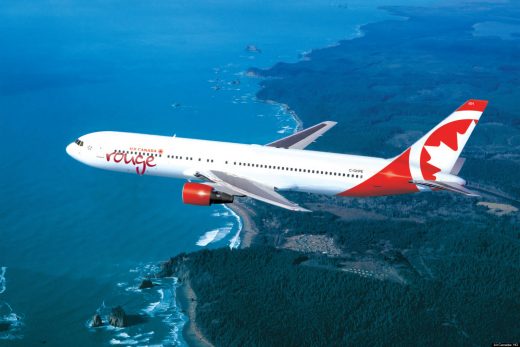 Scroll Down to see all of this week’s updates
Scroll Down to see all of this week’s updates
RCAF Supports Vimy Flight

The RCAF will lend major support to an aerial tribute to one of the most important battles in Canadian military history.
The Air Force has agreed to load six replica First World War fighters on a C-17 cargo plane to take them to France so they can fly over the ceremony marking the 100th anniversary of the battle of Vimy Ridge.
“We’re very gratified by the support from the Air Force,” said Allan Snowie, team leader for Vimy Flight in an interview at the Abbotsford Air Show Aug. 13.
Lt.Gen. Mike Hood, the commander of the RCAF, stopped by the Vimy Flight booth at Abbotsford to confirm the support.
The aircraft, four factory-built 7/8 scale Nieuports and two full-sized Sopwith Pups that are being built with the help of air cadets at the Canadian Museum of Flight in Langley, B.C., will be flown from Comox to France in time for the April 9 ceremony.
The six aircraft, all types flown by Canadian pilots during the battle, will fly over the ceremony and also do several other flights before and after the actual commemoration.
Vimy Ridge was a pivotal battle in the First World War and is considered a turning point in Canada’s ascension to the world stage as a country.
After the ceremonies, the aircraft will be flown to Halifax to begin a five-month cross-country tour that will include a flight over the Parliament buildings on Canada Day. A total of 10 pilots, all of them ex-military, including some members of the Snowbirds, will fly.
Snowie said the purpose of the ambitious effort is to bring the importance of Canada’s war contributions home to people across the country.
“This will bring Vimy to life,” he said.
EMS Helicopters Banned at Hospitals

Helijet has suspended air ambulance service to seven hospitals in the heavily populated Lower Mainland of B.C. and the Vancouver Island city of Nanaimo over a paperwork issue with its helicopters.
Transport Canada told Helijet its Sikorsky S-76s can’t legally land at H-1 helipads in urban areas because its interpretation of the flight manual suggests the aircraft need more windows to allow pilots better visibility if they have to make an emergency landing.
Helijet spokesman Rick Hill said the company has applied to TC for an exemption while the paperwork issue is sorted out. He said he expects service to return to normal this week. In the meantime, patients have to be transferred to regular ambulances at less restricted helipads for the final ride to hospital.
The B.C. government is looking into alternatives to Helijet, which has a contract for air ambulance service until 2019 in case the issues can’t be resolved.
“Transport Canada feels we are not in compliance,” Hill said. “But we have agreed to disagree so now we are seeking another exemption to go into effect while the manufacturer clarifies flight manuals, but that will take 18 to 24 months.”
He said if the exemption isn’t granted, he said Helijet will get other helicopters that do comply with the H-1 restrictions.
Fire Tornado Caused Tanker Crash

The Transportation Safety Board has determined that a Conair Air Tractor Fire Boss air tanker was caught up in a “fire whirl” before it went down near Cold Lake, Alberta, in 2015.
The TSB said the invisible and unpredictable phenomeon caused the aircraft to pitch up and stall while it was making a drop in Alberta.
“As Tanker 692 was coming out of its third drop, it encountered severe turbulence, which caused the aircraft to enter an undesired nose-up attitude, then roll to the left and pitch nose-down,” the board found. “The aircraft’s low altitude while fighting the wildfire made recovery improbable, resulting in impact with the terrain.”
The aircraft was one of four fighting the fire on the Cold Lake Air Weapons Range and the pilot, William Hilts, was killed.
Instrumentation on the aircraft recorded the effects of the turbulence as changing from a positive 4.2 Gs to -3.2 Gs in about a second.
Since the accident, Conair has given its pilots extra training on fire behaviour and installed five-point harnesses in the Air Tractors. The TSB said Hilts likely didn’t know what hit him.
“The pilot could not see the fire whirl, as it had not yet ingested enough loose debris to make it visible,” the report said. “Because the pilot had not experienced any difficulties on the previous drops, he likely would not have anticipated what was in the flight path.”
Rouge Keeps Growing

It appears Air Canada’s bid to blunt competition from WestJet with a spinoff budget carrier has paid off.
Air Canada Rouge has grown by 31 percent in the last year and is ten times the size of the airline when it started up in 2012.
The carrier now has 43 aircraft and has added an African destination to its rapidly expanding routes.
It started with four airplanes, two A319s and two Boeing 767s, all cast offs from the main line.
The fleet now includes 18 767s and 25 Airbuses, including some A321s that were bought new for Rouge and not passed over from Air Canada.
Rouge is going head to head with WestJet on its expansion to European destinations.
The seasonal Casablanca service started this summer and the longest route is Vancouver to Seoul, South Korea.
